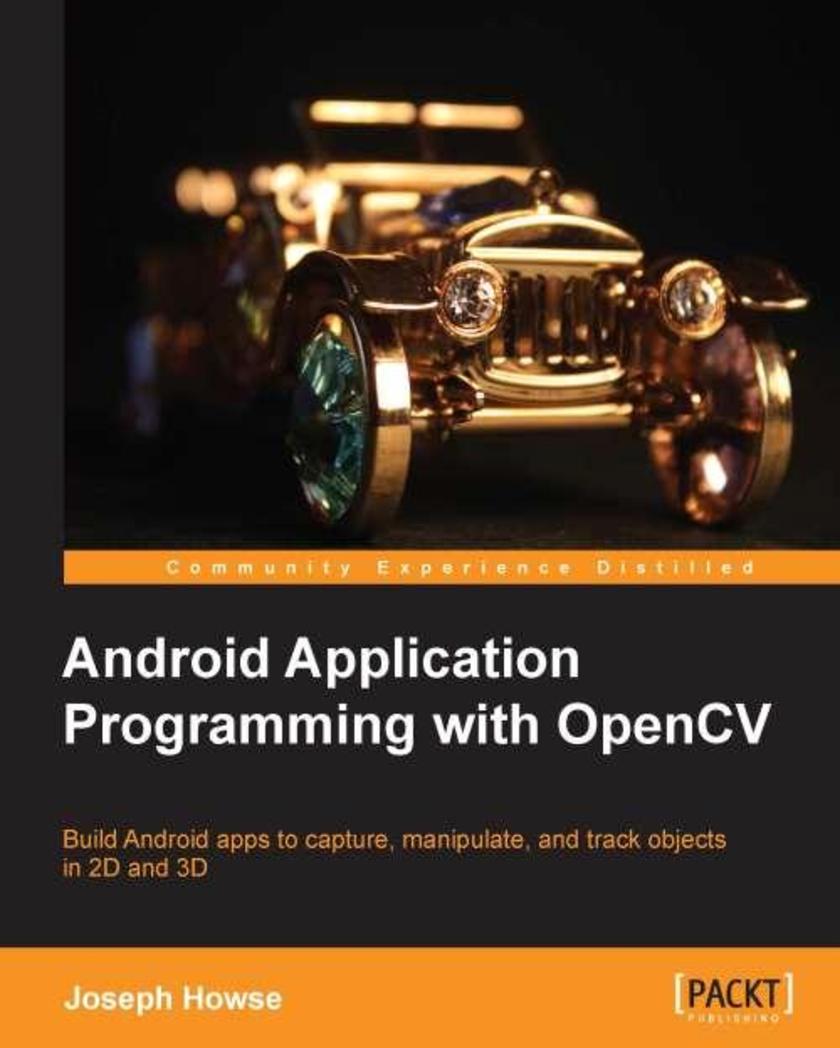
OpenCV Android Application Programming
¥63.21
A step-by-step tutorial to help you master computer vision and mobile app development.This book is for Java developers who are new to computer vision and who would like to learn about how it is used in relation to application development. It is assumed that you have previous experience in Java, but not necessarily Android. A basic understanding of image data (for example pixels and color channels) would be helpful too. You are expected to have a mobile device running Android 2.2 (Froyo) or greater and it must have a camera
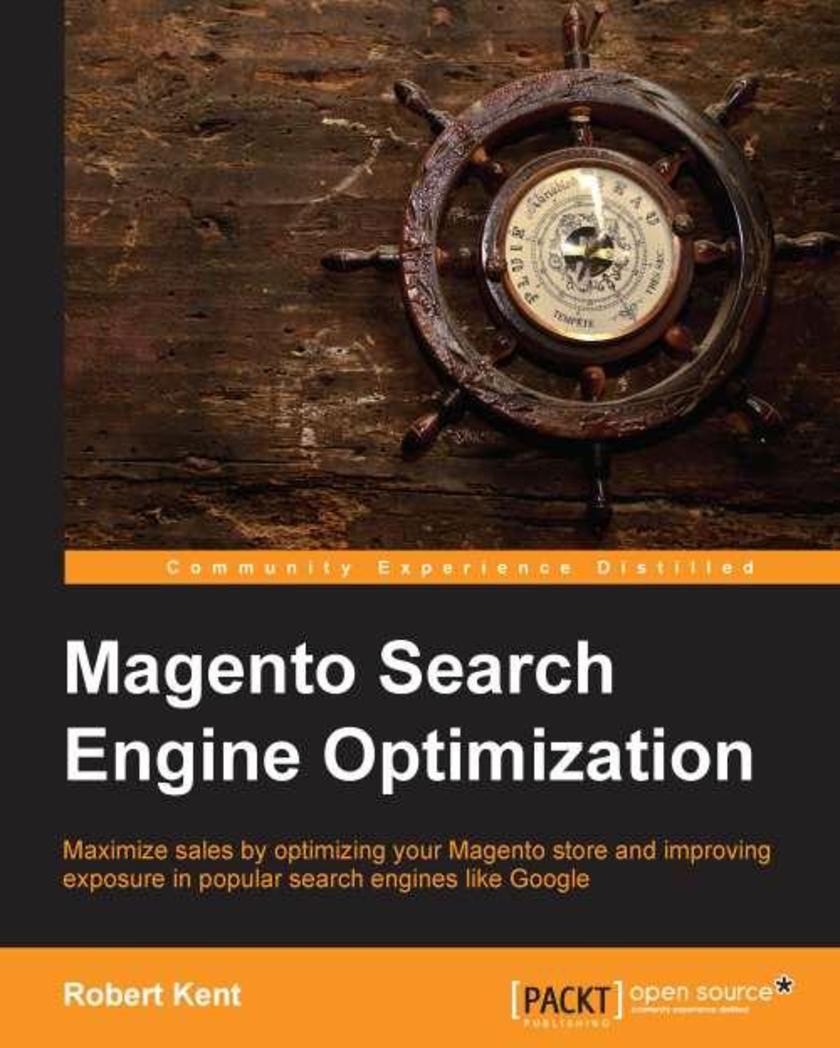
Magento Search Engine Optimization
¥63.21
This book is an easytofollow tutorial with best practices and advanced references which will help you to take full advantage of Magento with SEO. This book is aimed at both Magento developers and SEO specialists who wish to optimize search and end user elements such as clickthrough rates to ensure the design of their online shop sites effectively maximize sales. Magento store owners may also find large sections of this book useful in order to understand the larger impact small tweaks and changes can have on SEO especially when editing products and categories. This book assumes that the reader will understand the basic concepts of keyword research and the external factors that are required in order to manage an ongoing SEO campaign.
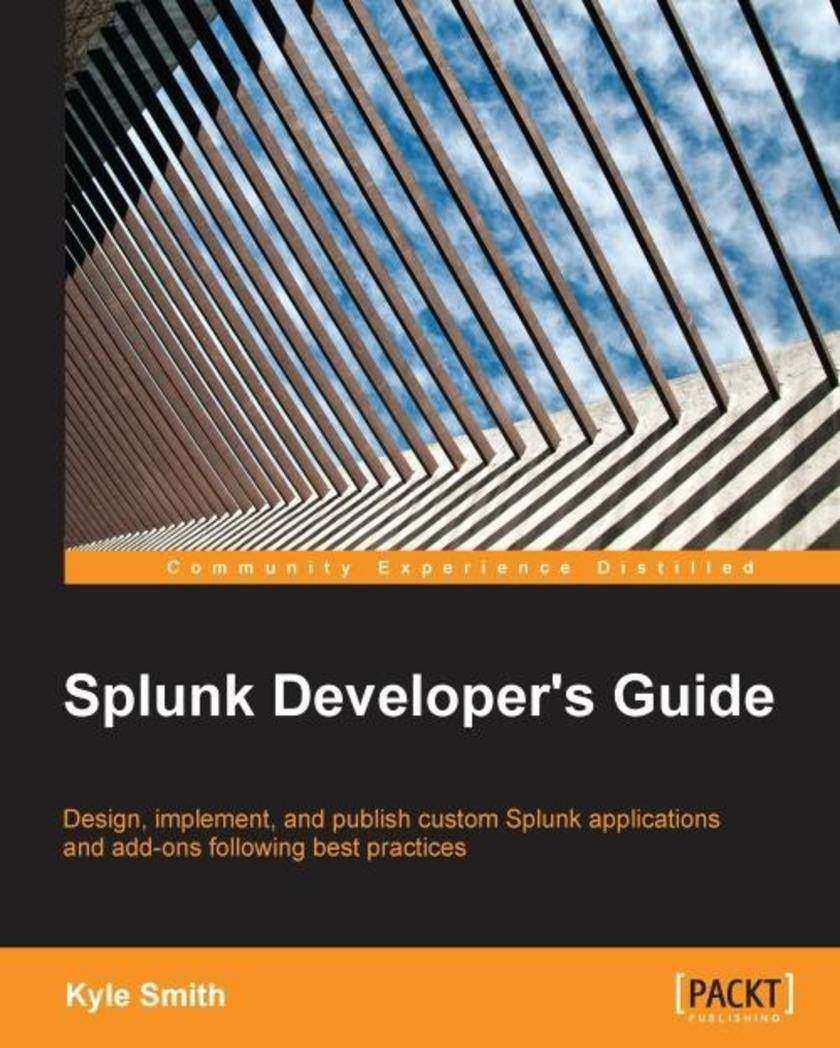
Splunk Developer's Guide
¥63.21
If you are a Splunk user and want to enter the wonderful world of Splunk application development, then this book is for you. Some experience with Splunk, writing searches, and designing basic dashboards is expected.
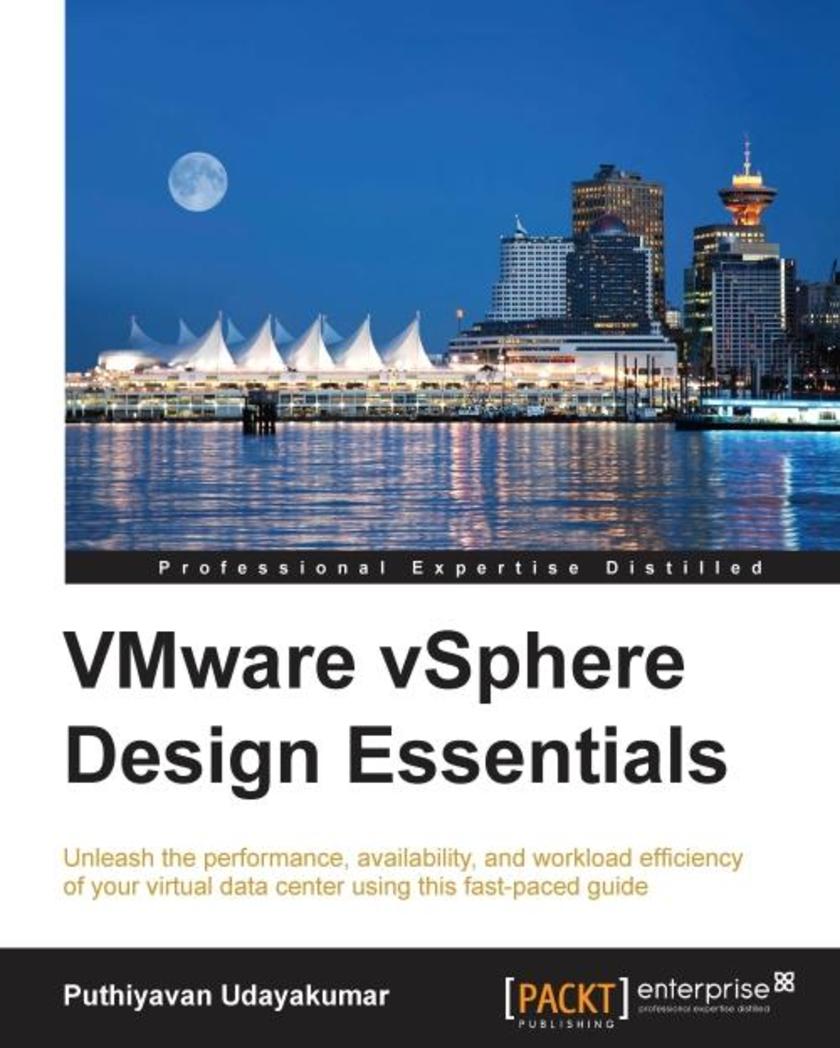
VMware vSphere Design Essentials
¥63.21
If you are a VMware beginner, VMware engineer, VMware SME, or VMware architect, then this is the book for you. A basic understanding of virtualization is a prerequisite.
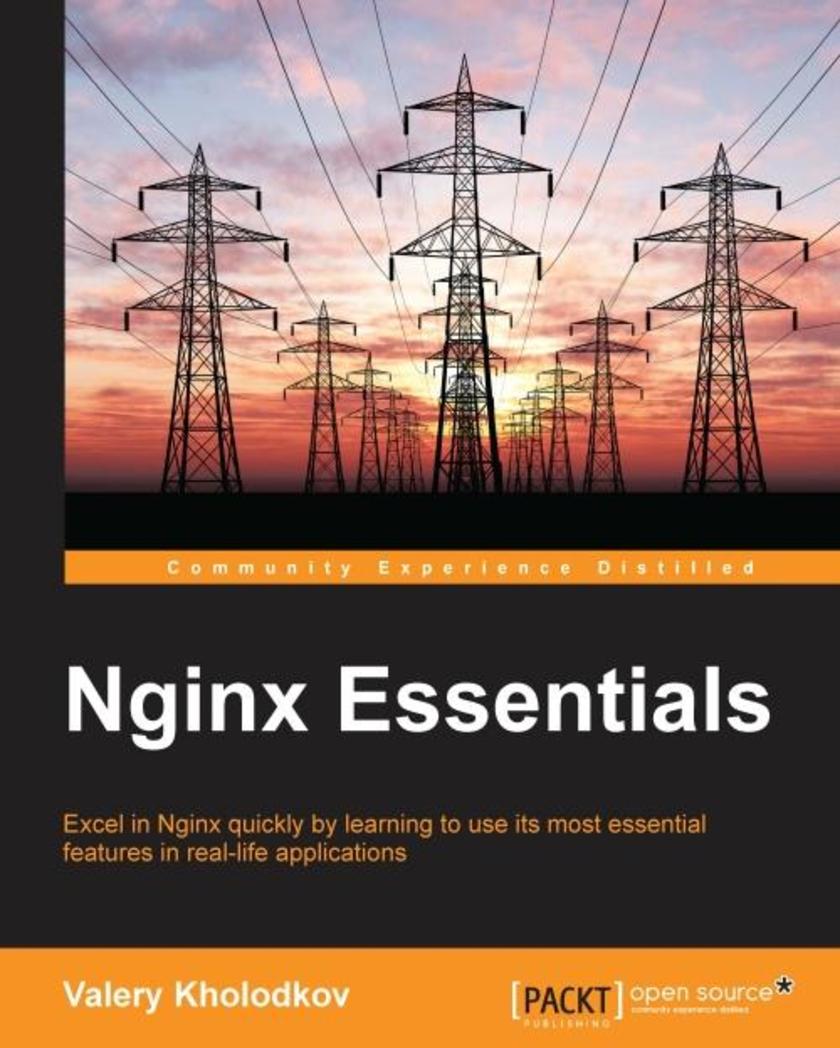
Nginx Essentials
¥63.21
This book is ideal for skilled web masters and site reliability engineers who want to switch to Nginx or solidify their knowledge of Nginx. Knowledge of Unix and webmaster skills are required.
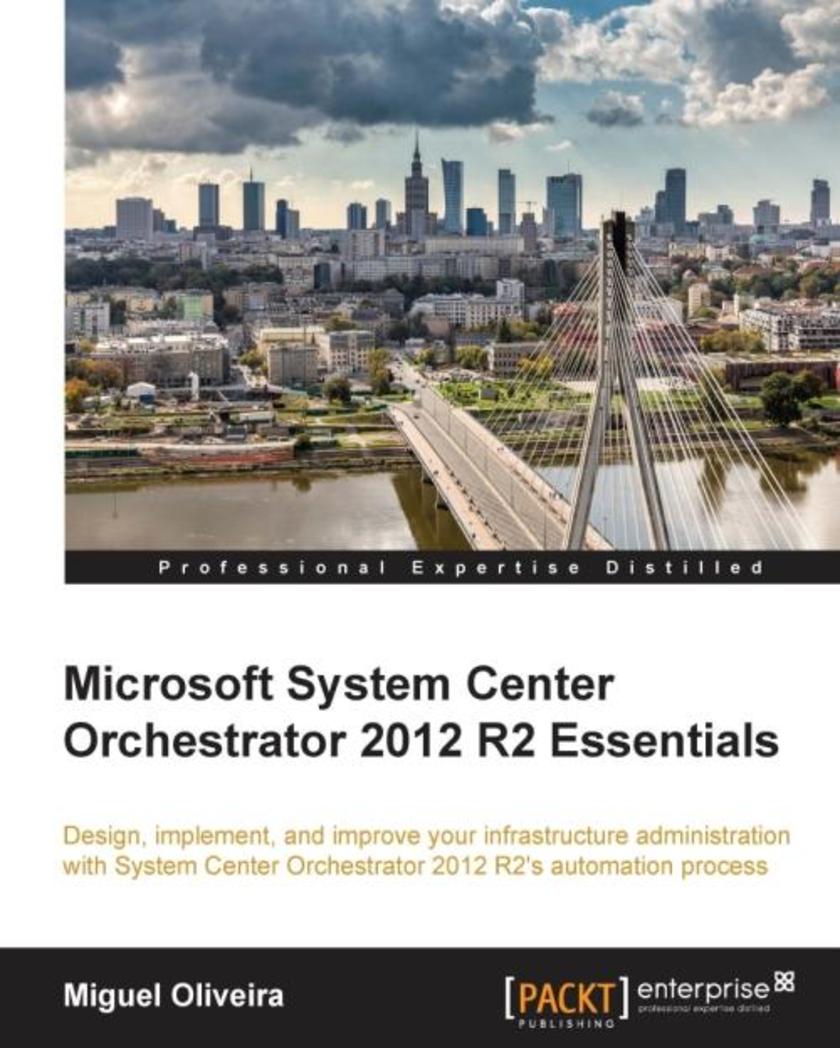
Microsoft System Center Orchestrator 2012 R2 Essentials
¥63.21
This book is targeted at those who want to gain time in their administrative tasks and profit from it to also improve their environment by reaching a more autonomous infrastructure.
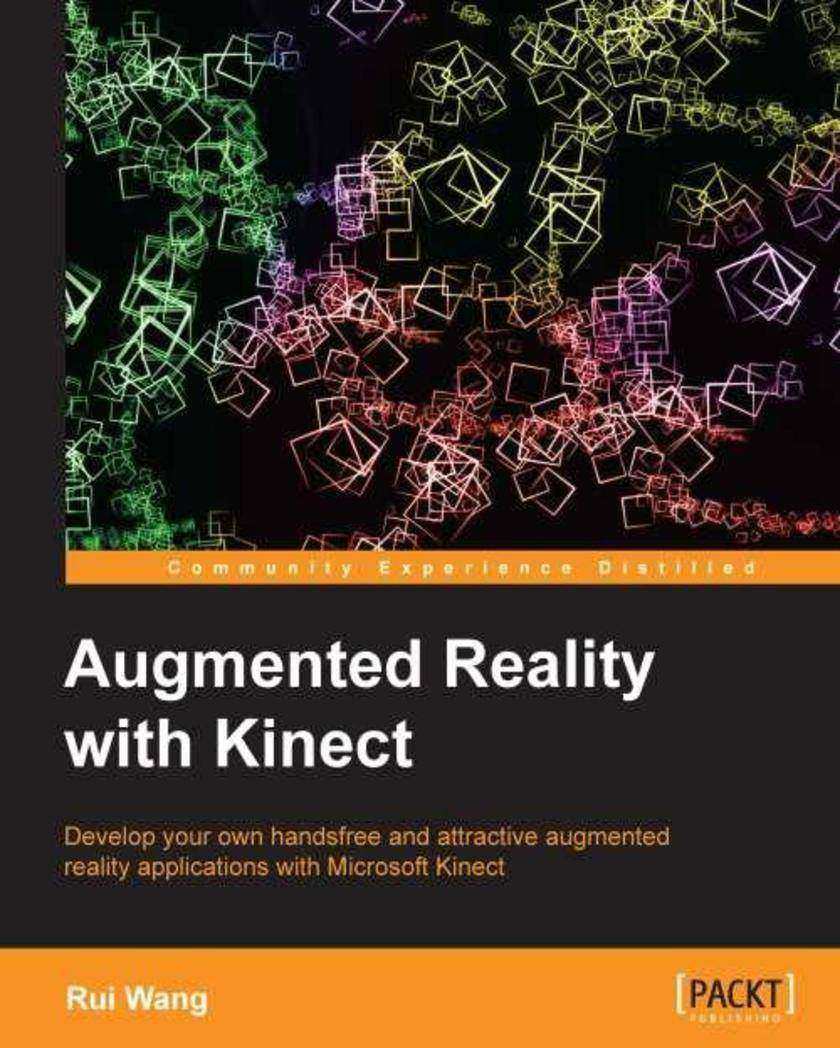
Augmented Reality with Kinect
¥63.21
This book is a mini tutorial with plenty of code examples and strategies to give you many options when building your own applications.This book is meant for readers who are familiar with C/C++ programming and want to write simple programs with Kinect. The standard template library can also be used as it is simple enough to understand.
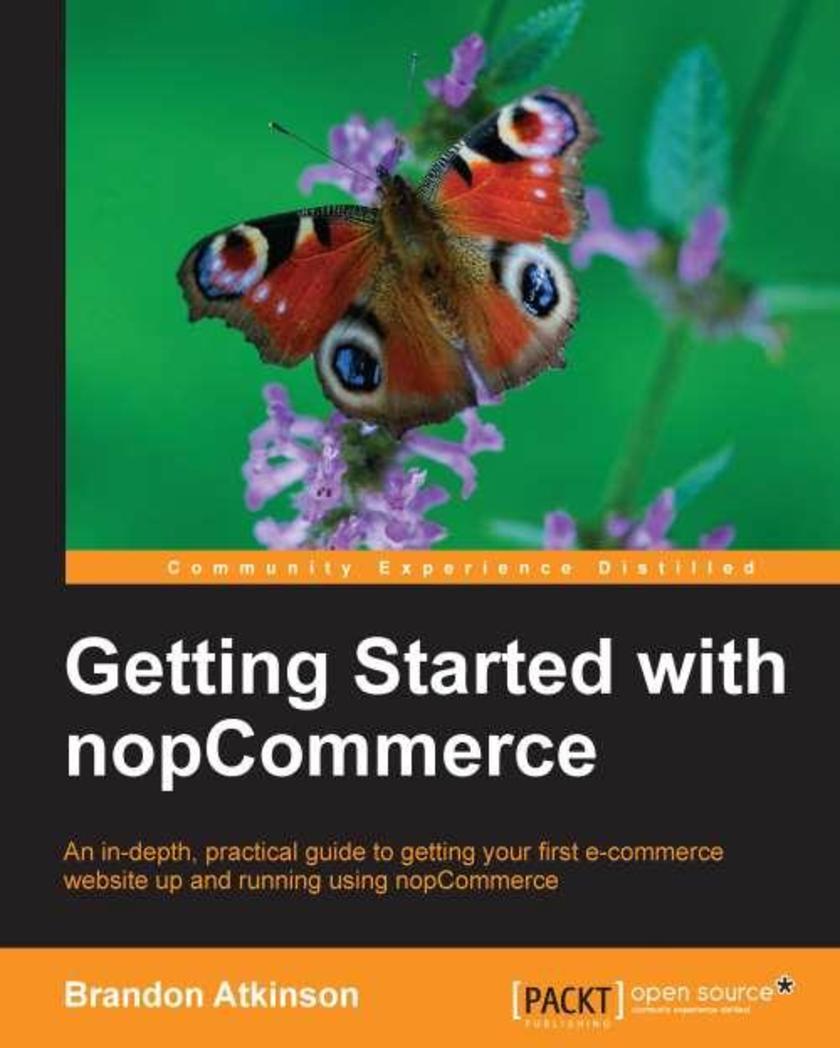
Getting Started with nopCommerce
¥63.21
A friendly, tutorial style book, which will help you learn your way through creating a live storefront with nopCommerce in a step-by-step manner.Getting Started with nopCommerce is for anyone who wants to sell products online using nopCommerce. If you are a non-technical person and are discouraged by the complexity of this powerful e-commerce application, then this book is for you.
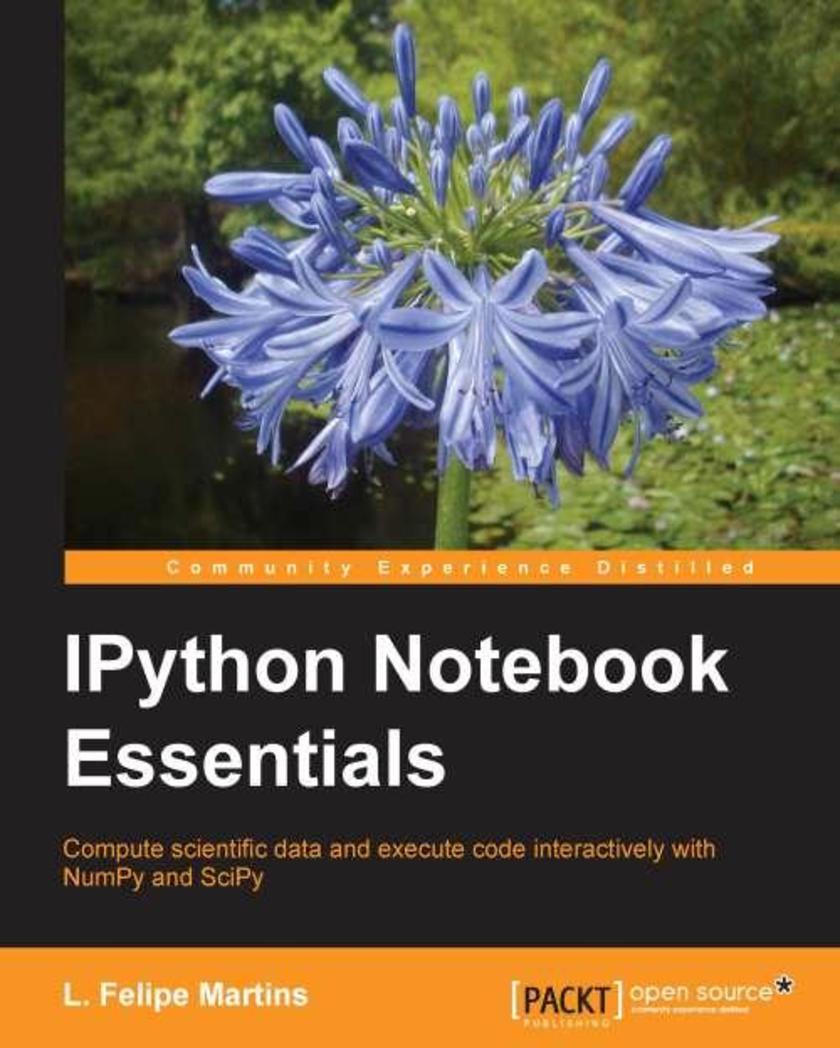
IPython Notebook Essentials
¥63.21
If you are a professional, student, or educator who wants to learn to use IPython Notebook as a tool for technical and scientific computing, visualization, and data analysis, this is the book for you. This book will prove valuable for anyone that needs to do computations in an agile environment.
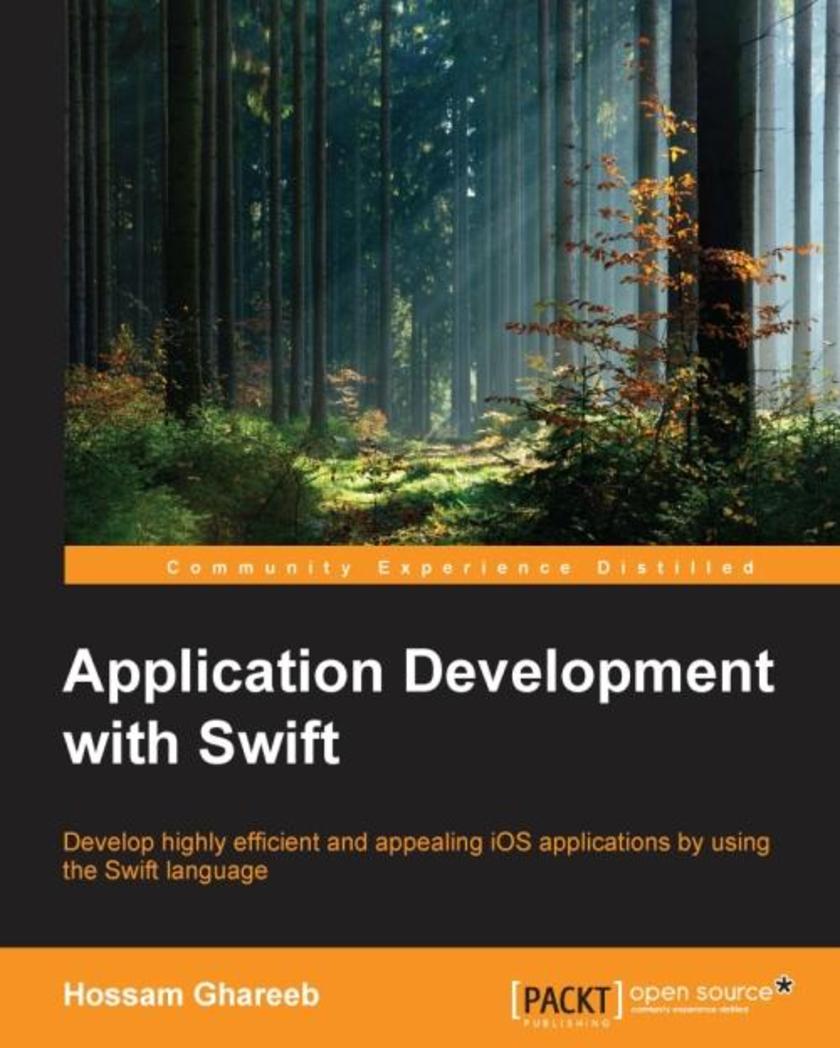
Application Development with Swift
¥63.21
If you are an iOS developer with experience in Objective-C, and wish to develop applications with Swift, then this book is ideal for you. Familiarity with the fundamentals of Swift is an added advantage but not a necessity.
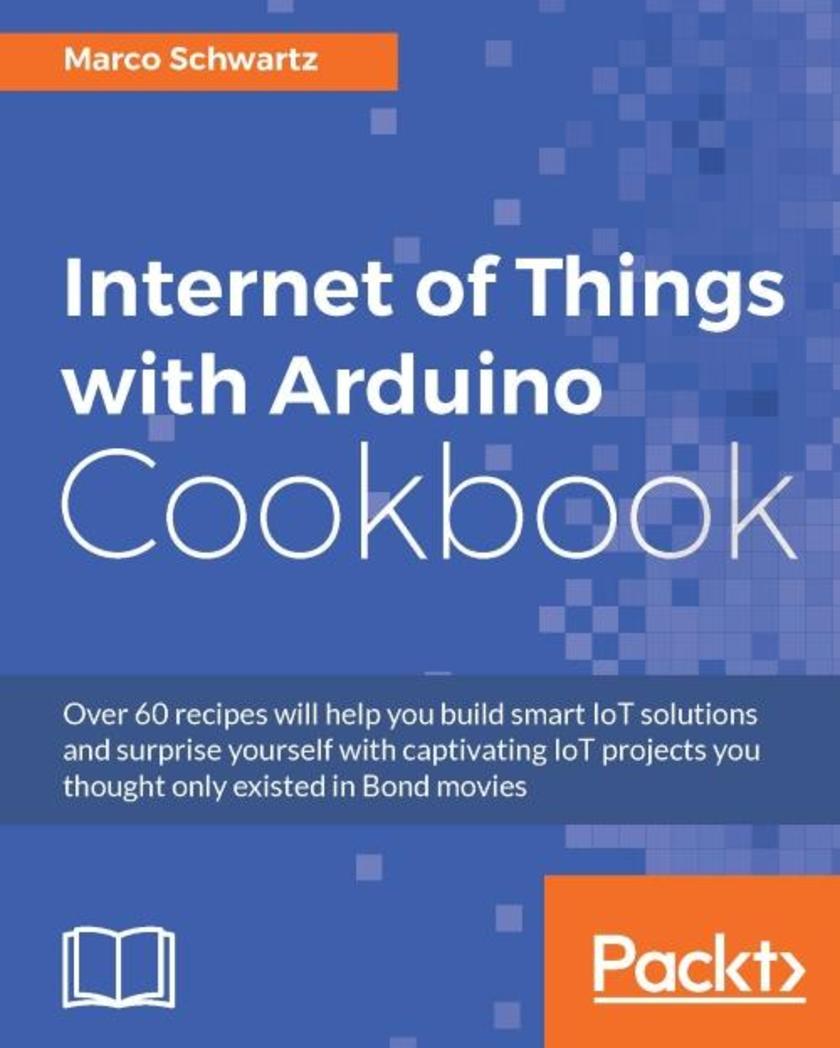
Internet of Things with Arduino Cookbook
¥63.21
Over 60 recipes will help you build smart IoT solutions and surprise yourself with captivating IoT projects you thought only existed in Bond movies About This Book This book offers key solutions and advice to address the hiccups faced when working on Arduino-based IoT projects in the real world Take your existing skills and capabilities to the next level by building challenging IoT applications with ease. Be the tech disruptor you always wanted to be with key recipes that help you solve Arduino IoT related problems smarter and faster. Put IoT to work through recipes on building Arduino-based devices that take control of your home, health, and life! Who This Book Is For This book is primarily for tech enthusiasts and early IoT adopters who would like to make the most of IoT and address the challenges encountered while developing IoT-based applications with Arduino. This book is also good for developers with basic electronics knowledge who need help to successfully build Arduino projects. What You Will Learn Monitor several Arduino boards simultaneously Tweet sensor data directly from your Arduino board Post updates on your Facebook wall directly from your Arduino board Create an automated access control with a fingerprint sensor Control your entire home from a single dashboard Make a GPS tracker that you can track in Google Maps Build a live camera that streams directly from your robot In Detail Arduino is a powerful and very versatile platform used by millions of people around the world to create DIY electronics projects. It can be connected to a wide variety of sensors and other components, making it the ideal platform to build amazing Internet of Things (IoT) projects on—the next wave in the era of computing. This book takes a recipe-based approach, giving you precise examples on how to build IoT projects of all types using the Arduino platform. You will come across projects from several fields, including the popular robotics and home automation domains. Along with being introduced to several forms of interactions within IoT, including projects that directly interact with well-known web services such as Twitter, Facebook, and Dropbox we will also focus on Machine-to-Machine (M2M) interactions, where Arduino projects interact without any human intervention. You will learn to build a few quick and easy-to-make fun projects that will really expand your horizons in the world of IoT and Arduino. Each chapter ends with a troubleshooting recipe that will help you overcome any problems faced while building these projects. By the end of this book, you will not only know how to build these projects, but also have the skills necessary to build your own IoT projects in the future. Style and approach This book takes a recipe-based approach, giving you precise examples on how to build IoT projects using the Arduino platform. You will learn to build fun and easy projects through a task-oriented approach.
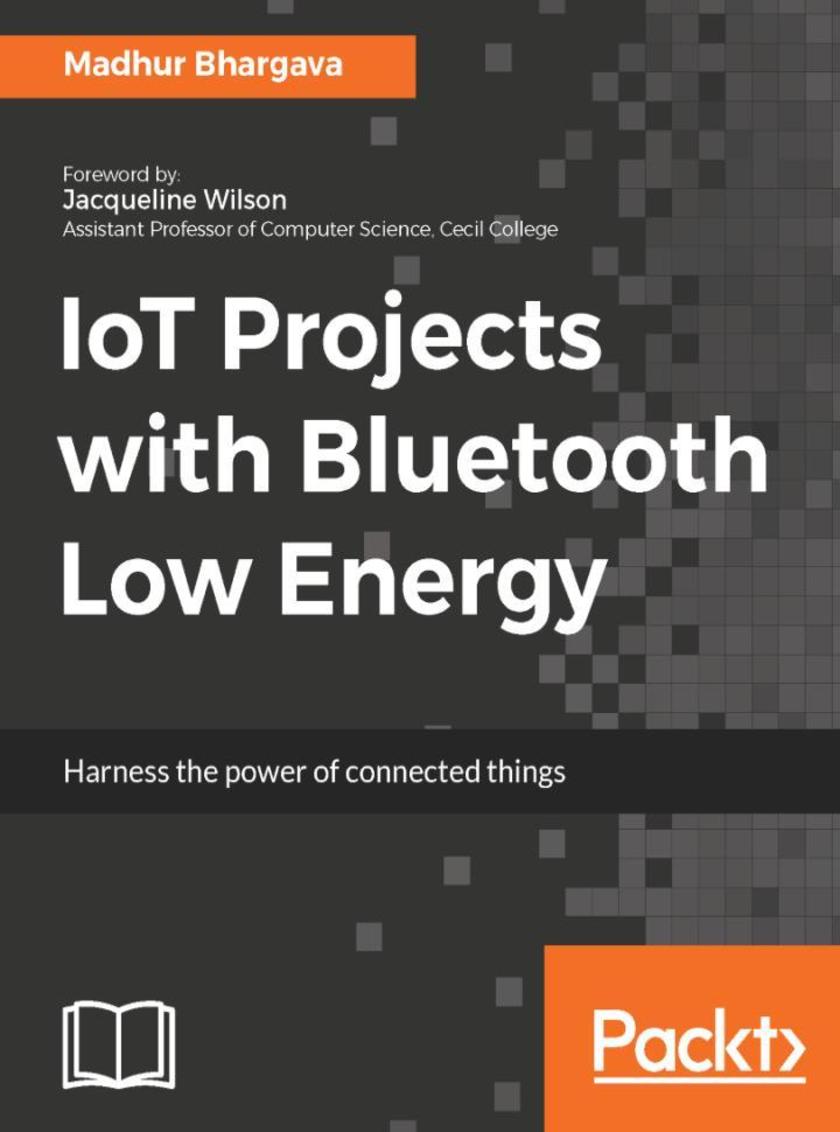
IoT Projects with Bluetooth Low Energy
¥63.21
Use the power of BLE to create exciting IoT applications About This Book ? Build hands-on IoT projects using Bluetooth Low Energy and learn about Bluetooth 5 and its features. ? Build a health tracking system, and indoor navigation and warehouse weather monitoring projects using smart devices. ? Build on a theoretical foundation and create a practice-based understanding of Bluetooth Low Energy. Who This Book Is For If you're an application developer, a hardware enthusiast, or just curious about the Internet of Things and how to convert it into hands-on projects, then this book is for you. Having some knowledge of writing mobile applications will be advantageous. What You Will Learn ? Learn about the architecture and IoT uses of BLE, and in which domains it is being used the most ? Set up and learn about various development platforms (Android, iOS, Firebase, Raspberry Pi, Beacons, and GitHub) ? Create an Explorer App (Android/iOS) to diagnose a Fitness Tracker ? Design a Beacon with the Raspberry Pi and write an app to detect the Beacon ? Write a mobile app to periodically poll the BLE tracking sensor ? Compose an app to read data periodically from temperature and humidity sensors ? Explore more applications of BLE with IoT ? Design projects for both Android and iOS mobile platforms In Detail Bluetooth Low Energy, or Bluetooth Smart, is Wireless Personal Area networking aimed at smart devices and IoT applications. BLE has been increasingly adopted by application developers and IoT enthusiasts to establish connections between smart devices. This book initially covers all the required aspects of BLE, before you start working on IoT projects. In the initial stages of the book, you will learn about the basic aspects of Bluetooth Low Energy—such as discovering devices, services, and characteristics—that will be helpful for advanced-level projects. This book will guide you through building hands-on projects using BLE and IoT. These projects include tracking health data, using a mobile App, and making this data available for health practitioners; Indoor navigation; creating beacons using the Raspberry Pi; and warehouse weather Monitoring. This book also covers aspects of Bluetooth 5 (the latest release) and its effect on each of these projects. By the end of this book, you will have hands-on experience of using Bluetooth Low Energy to integrate with smart devices and IoT projects. Style and approach A practical guide that will help you promote yourself into an expert by building and exploring practical applications of Bluetooth Low Energy.
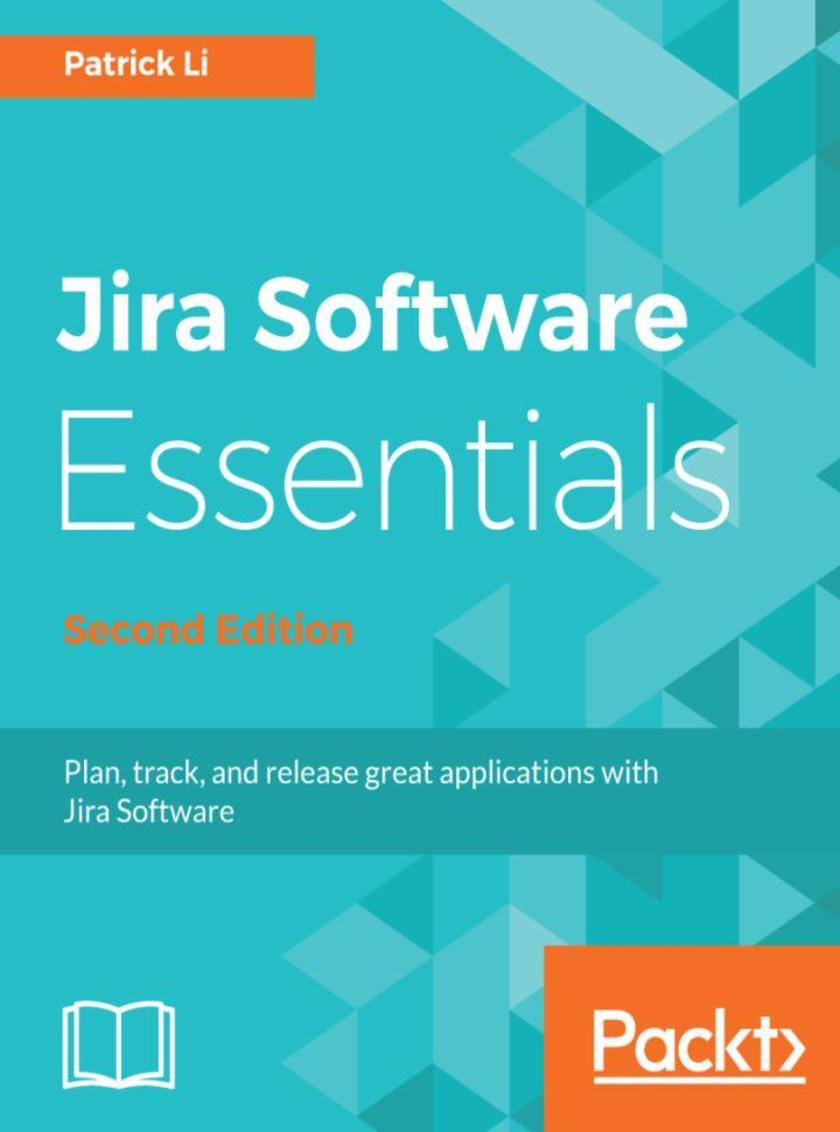
Jira Software Essentials - Second Edition
¥63.21
Explore Jira Software to manage your projects proficiently About This Book ? Plan and manage projects effortlessly with Jira Software by integrating it with other applications ? Improve your team's performance with Scrum and Kanban, together with agile methodology ? Easy-to-follow learning guide to install Jira Software and understand how it fits in with Atlassian Jira Who This Book Is For If you want to get started with Jira Software and learn how to run your Jira projects the agile way, then this is the perfect book for you. You will need to be familiar with the basics of Jira, both from an end user's and an administrator's perspective. Experience with workflows, custom fields, and other administrative functions of Jira will be useful. What You Will Learn ? Understand the basics and agile methodologies of Jira software ? Use Jira Software in a Scrum environment ? Manage and run Jira Software projects beyond the out of box Scrum and Kanban way ? Combine Scrum and Kanban and use other project management options beyond just agile ? Customize Jira Software’s various features and options as per your requirements ? Work with Jira Agile offline, and plan and forecast projects with agile portfolio ? Integrate Jira Agile with Confluence and Bitbucket In Detail Jira Software is an agile project management tool that supports any agile methodology, be it scrum, Kanban, or your own unique flavour. From agile boards to reports, you can plan, track, and manage all your agile software development projects from a single tool. Jira Software brings the power of agile methodology to Atlassian Jira. This second edition of JIRA Agile Essentials, will help you dive straight into the action, exploring critical agile terminologies and concepts in the context of Jira Software. You will learn how to plan, track, and release great software. This book will teach you how to install and run Jira Software and set it up to run with Scrum and Kanban. It will also teach you to use Jira Software your way and run projects beyond the out-of-box Scrum and Kanban way, including a hybrid approach of both the methodologies and other options that come with Jira Software. Later, you will learn how to integrate it with the tools you are already using and enhance Jira with add-ons such as Confluence. You will learn to stay connected with your team from anywhere to ensure great development. Jira Software has numerous deployment options in the cloud, on your own infrastructure, or at a massive scale. You will be introduced to Bitbucket, Atlassian’s distributed version control system, which integrates seamlessly with Jira, allowing your team to work within the two applications as one harmonious environment. With this practical guide, you will develop a great working knowledge of Jira Software and your project management will become much more efficient. Style and approach This practical book explains Jira Software with the help of detailed examples in a step-by- step manner.
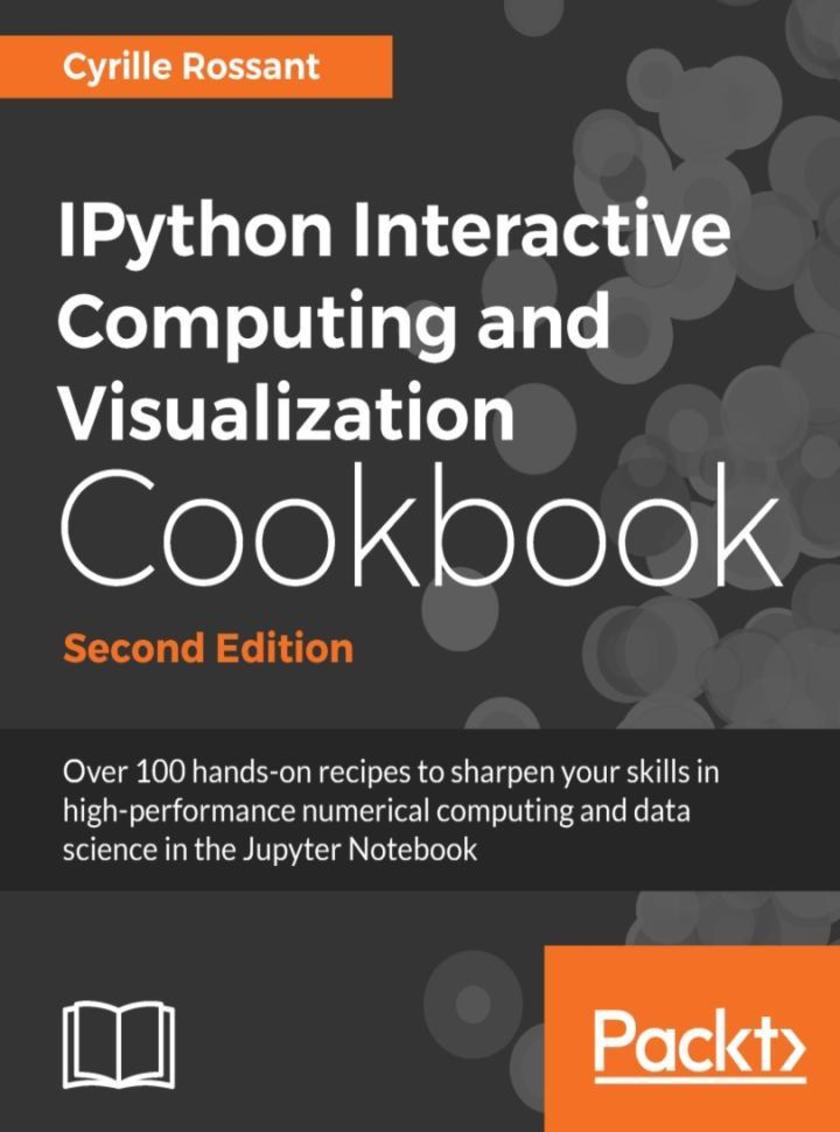
IPython Interactive Computing and Visualization Cookbook - Second Edition
¥63.21
Learn to use IPython and Jupyter Notebook for your data analysis and visualization work. About This Book ? Leverage the Jupyter Notebook for interactive data science and visualization ? Become an expert in high-performance computing and visualization for data analysis and scientific modeling ? A comprehensive coverage of scientific computing through many hands-on, example-driven recipes with detailed, step-by-step explanations Who This Book Is For This book is intended for anyone interested in numerical computing and data science: students, researchers, teachers, engineers, analysts, and hobbyists. A basic knowledge of Python/NumPy is recommended. Some skills in mathematics will help you understand the theory behind the computational methods. What You Will Learn ? Master all features of the Jupyter Notebook ? Code better: write high-quality, readable, and well-tested programs; profile and optimize your code; and conduct reproducible interactive computing experiments ? Visualize data and create interactive plots in the Jupyter Notebook ? Write blazingly fast Python programs with NumPy, ctypes, Numba, Cython, OpenMP, GPU programming (CUDA), parallel IPython, Dask, and more ? Analyze data with Bayesian or frequentist statistics (Pandas, PyMC, and R), and learn from actual data through machine learning (scikit-learn) ? Gain valuable insights into signals, images, and sounds with SciPy, scikit-image, and OpenCV ? Simulate deterministic and stochastic dynamical systems in Python ? Familiarize yourself with math in Python using SymPy and Sage: algebra, analysis, logic, graphs, geometry, and probability theory In Detail Python is one of the leading open source platforms for data science and numerical computing. IPython and the associated Jupyter Notebook offer efficient interfaces to Python for data analysis and interactive visualization, and they constitute an ideal gateway to the platform. IPython Interactive Computing and Visualization Cookbook, Second Edition contains many ready-to-use, focused recipes for high-performance scientific computing and data analysis, from the latest IPython/Jupyter features to the most advanced tricks, to help you write better and faster code. You will apply these state-of-the-art methods to various real-world examples, illustrating topics in applied mathematics, scientific modeling, and machine learning. The first part of the book covers programming techniques: code quality and reproducibility, code optimization, high-performance computing through just-in-time compilation, parallel computing, and graphics card programming. The second part tackles data science, statistics, machine learning, signal and image processing, dynamical systems, and pure and applied mathematics. Style and approach IPython Interactive Computing and Visualization Cookbook, Second Edition is a practical, hands-on book that will teach you how to analyze and visualize all kinds of data in the Jupyter Notebook.
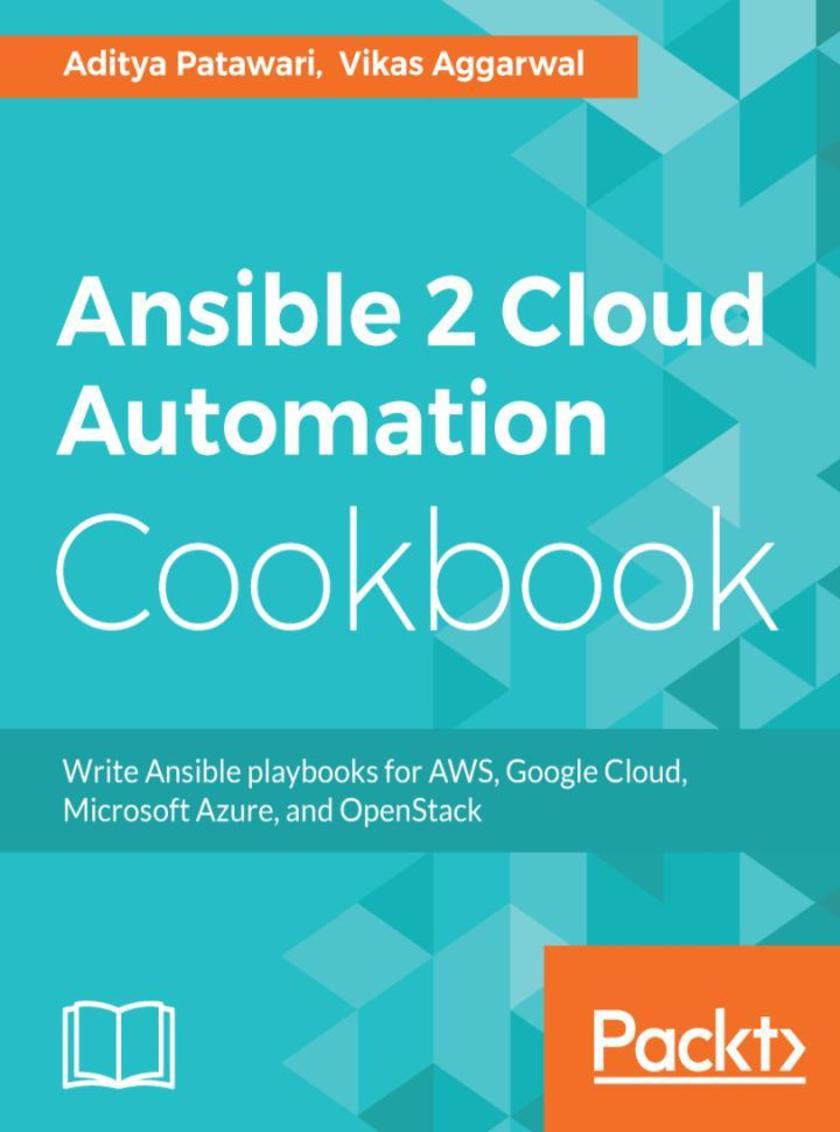
Ansible 2 Cloud Automation Cookbook
¥63.21
Orchestrate your cloud infrastructure About This Book ? Recipe-based approach to install and configure cloud resources using Ansible ? Covers various cloud-related modules and their functionalities ? Includes deployment of a sample application to the cloud resources that we create ? Learn the best possible way to manage and automate your cloud infrastructure Who This Book Is For If you are a system administrator, infrastructure engineer, or a DevOps engineer who wants to obtain practical knowledge about Ansible and its cloud deliverables, then this book is for you. Recipes in this book are designed for people who would like to manage their cloud infrastructures efficiently using Ansible, which is regarded as one of the best tools for cloud management and automation. What You Will Learn ? Use Ansible Vault to protect secrets ? Understand how Ansible modules interact with cloud providers to manage resources ? Build cloud-based resources for your application ? Create resources beyond simple virtual machines ? Write tasks that can be reused to create resources multiple times ? Work with self-hosted clouds such as OpenStack and Docker ? Deploy a multi-tier application on various cloud providers In Detail Ansible has a large collection of inbuilt modules to manage various cloud resources. The book begins with the concepts needed to safeguard your credentials and explain how you interact with cloud providers to manage resources. Each chapter begins with an introduction and prerequisites to use the right modules to manage a given cloud provider. Learn about Amazon Web Services, Google Cloud, Microsoft Azure, and other providers. Each chapter shows you how to create basic computing resources, which you can then use to deploy an application. Finally, you will be able to deploy a sample application to demonstrate various usage patterns and utilities of resources. Style and approach This book will help readers get started with Ansible cloud modules. It has code snippets and diagrams along with real world examples that will help you move ahead easily. Using real world scenarios, you will learn to deploy an application to cloud resources.
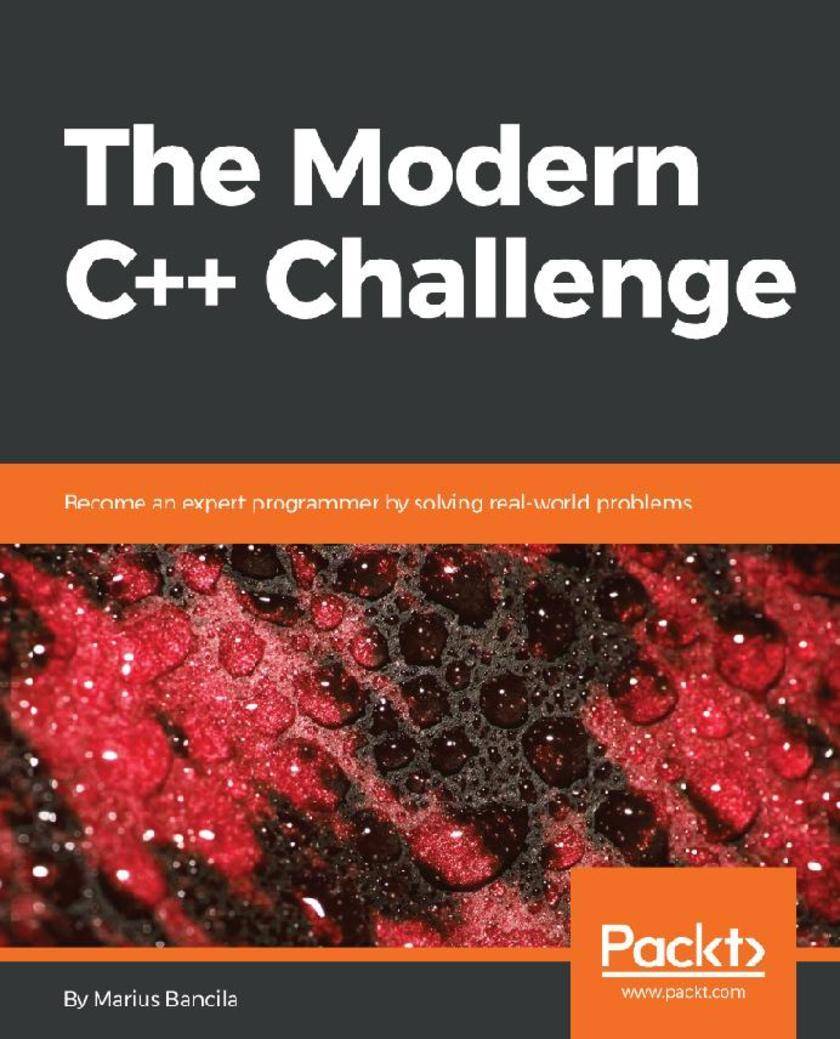
The Modern C++ Challenge
¥63.21
Test your C++ programming skills by solving real-world programming problems covered in the book About This Book ? Solve a variety of real-world programming and logic problems by leveraging the power of C++17 ? Test your skills in using language features, algorithms, data structures, design patterns, and more ? Explore areas such as cryptography, communication, and image handling in C++ Who This Book Is For This book will appeal to C++ developers of all levels. There's a challenge inside for everyone. What You Will Learn ? Serialize and deserialize JSON and XML data ? Perform encryption and signing to facilitate secure communication between parties ? Embed and use SQLite databases in your applications ? Use threads and asynchronous functions to implement generic purpose parallel algorithms ? Compress and decompress files to/from a ZIP archive ? Implement data structures such as circular buffer and priority queue ? Implement general purpose algorithms as well as algorithms that solve specific problems ? Create client-server applications that communicate over TCP/IP ? Consume HTTP REST services ? Use design patterns to solve real-world problems In Detail C++ is one of the most widely-used programming languages and has applications in a variety of fields, such as gaming, GUI programming, and operating systems, to name a few. Through the years, C++ has evolved into (and remains) one of the top choices for software developers worldwide. This book will show you some notable C++ features and how to implement them to meet your application needs. Each problem is unique and doesn't just test your knowledge of the language; it tests your ability to think out of the box and come up with the best solutions. With varying levels of difficulty, you'll be faced with a wide variety of challenges. And in case you're stumped, you don't have to worry: we've got the best solutions to the problems in the book. So are you up for the challenge? Style and approach A recipe-based approach where each problem is solved with the help of step by step instructions.
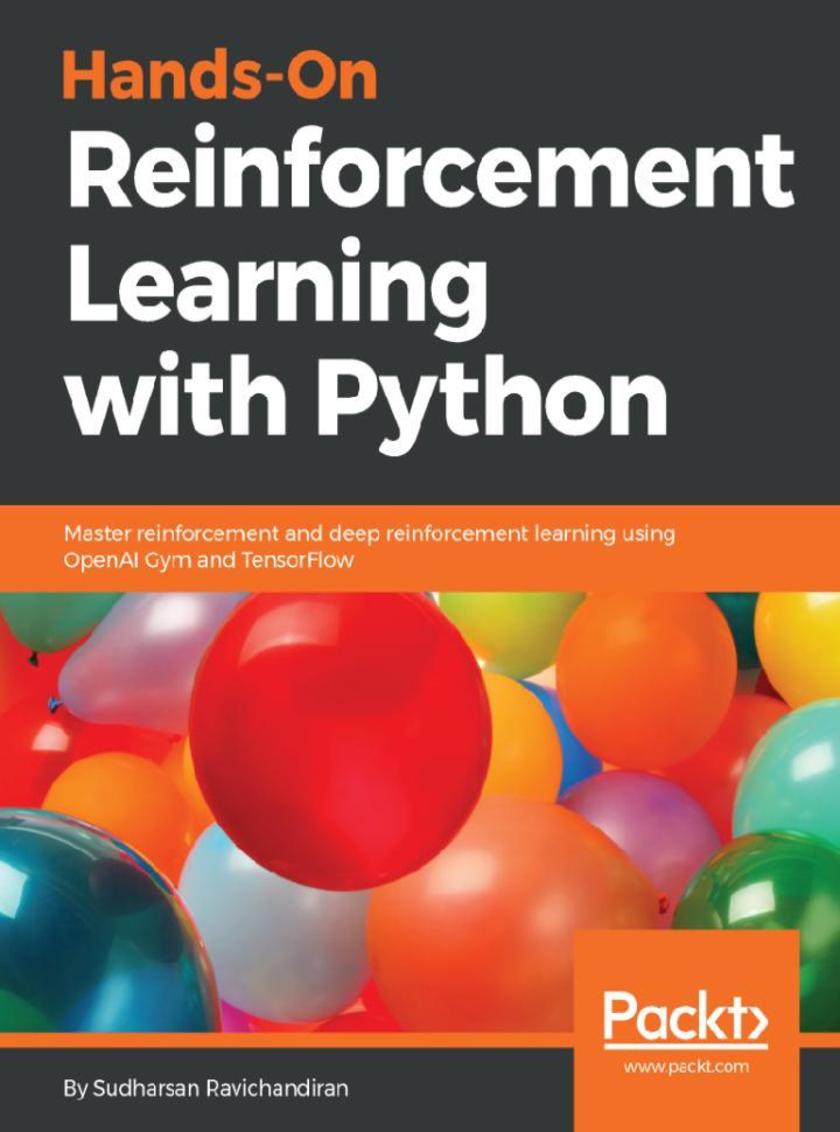
Hands-On Reinforcement Learning with Python
¥63.21
A hands-on guide enriched with examples to master deep reinforcement learning algorithms with Python About This Book ? Your entry point into the world of artificial intelligence using the power of Python ? An example-rich guide to master various RL and DRL algorithms ? Explore various state-of-the-art architectures along with math Who This Book Is For If you’re a machine learning developer or deep learning enthusiast interested in artificial intelligence and want to learn about reinforcement learning from scratch, this book is for you. Some knowledge of linear algebra, calculus, and the Python programming language will help you understand the concepts covered in this book. What You Will Learn ? Understand the basics of reinforcement learning methods, algorithms, and elements ? Train an agent to walk using OpenAI Gym and Tensorflow ? Understand the Markov Decision Process, Bellman’s optimality, and TD learning ? Solve multi-armed-bandit problems using various algorithms ? Master deep learning algorithms, such as RNN, LSTM, and CNN with applications ? Build intelligent agents using the DRQN algorithm to play the Doom game ? Teach agents to play the Lunar Lander game using DDPG ? Train an agent to win a car racing game using dueling DQN In Detail Reinforcement Learning (RL) is the trending and most promising branch of artificial intelligence. Hands-On Reinforcement learning with Python will help you master not only the basic reinforcement learning algorithms but also the advanced deep reinforcement learning algorithms. The book starts with an introduction to Reinforcement Learning followed by OpenAI Gym, and TensorFlow. You will then explore various RL algorithms and concepts, such as Markov Decision Process, Monte Carlo methods, and dynamic programming, including value and policy iteration. This example-rich guide will introduce you to deep reinforcement learning algorithms, such as Dueling DQN, DRQN, A3C, PPO, and TRPO. You will also learn about imagination-augmented agents, learning from human preference, DQfD, HER, and many more of the recent advancements in reinforcement learning. By the end of the book, you will have all the knowledge and experience needed to implement reinforcement learning and deep reinforcement learning in your projects, and you will be all set to enter the world of artificial intelligence. Style and approach This is a hands-on book designed to further expand your machine learning skills by understanding reinforcement to deep reinforcement learning algorithms with applications in Python.
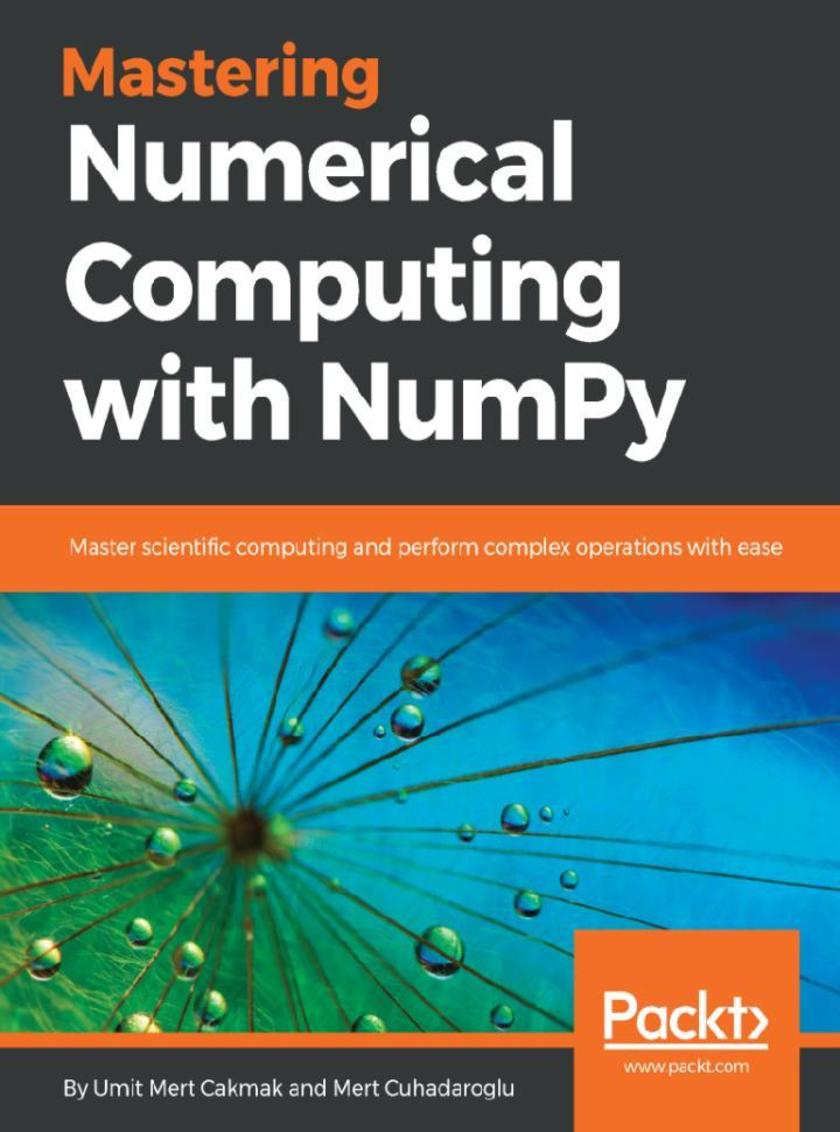
Mastering Numerical Computing with NumPy
¥63.21
Enhance the power of NumPy and start boosting your scientific computing capabilities About This Book ? Grasp all aspects of numerical computing and understand NumPy ? Explore examples to learn exploratory data analysis (EDA), regression, and clustering ? Access NumPy libraries and use performance benchmarking to select the right tool Who This Book Is For Mastering Numerical Computing with NumPy is for you if you are a Python programmer, data analyst, data engineer, or a data science enthusiast, who wants to master the intricacies of NumPy and build solutions for your numeric and scientific computational problems. You are expected to have familiarity with mathematics to get the most out of this book. What You Will Learn ? Perform vector and matrix operations using NumPy ? Perform exploratory data analysis (EDA) on US housing data ? Develop a predictive model using simple and multiple linear regression ? Understand unsupervised learning and clustering algorithms with practical use cases ? Write better NumPy code and implement the algorithms from scratch ? Perform benchmark tests to choose the best configuration for your system In Detail NumPy is one of the most important scientific computing libraries available for Python. Mastering Numerical Computing with NumPy teaches you how to achieve expert level competency to perform complex operations, with in-depth coverage of advanced concepts. Beginning with NumPy's arrays and functions, you will familiarize yourself with linear algebra concepts to perform vector and matrix math operations. You will thoroughly understand and practice data processing, exploratory data analysis (EDA), and predictive modeling. You will then move on to working on practical examples which will teach you how to use NumPy statistics in order to explore US housing data and develop a predictive model using simple and multiple linear regression techniques. Once you have got to grips with the basics, you will explore unsupervised learning and clustering algorithms, followed by understanding how to write better NumPy code while keeping advanced considerations in mind. The book also demonstrates the use of different high-performance numerical computing libraries and their relationship with NumPy. You will study how to benchmark the performance of different configurations and choose the best for your system. By the end of this book, you will have become an expert in handling and performing complex data manipulations. Style and approach This mastering guide will help you master your skills required to perform a complex numerical computation. The book contains the right mixture of theory and practical examples that will help you in dealing with the advanced NumPy and build solutions for your numeric and scientific computational problems
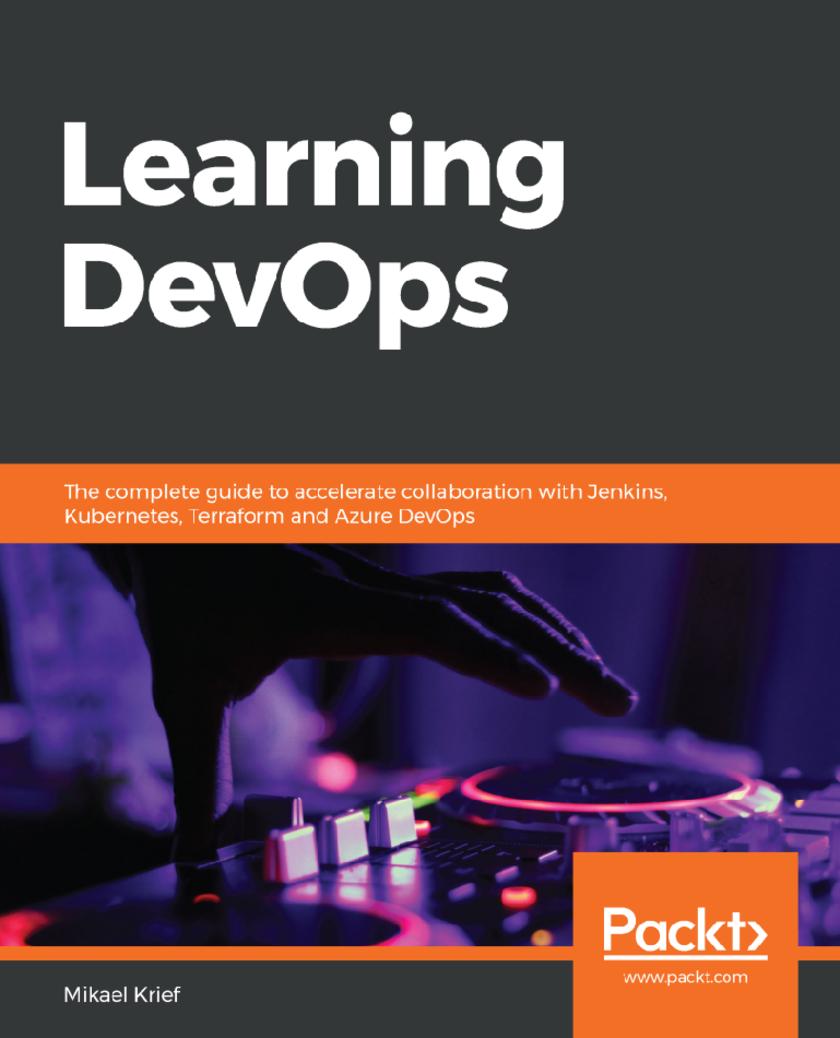
Learning DevOps
¥63.21
Simplify your DevOps roles with DevOps tools and techniques Key Features * Learn to utilize business resources effectively to increase productivity and collaboration * Leverage the ultimate open source DevOps tools to achieve continuous integration and continuous delivery (CI/CD) * Ensure faster time-to-market by reducing overall lead time and deployment downtime Book Description The implementation of DevOps processes requires the efficient use of various tools, and the choice of these tools is crucial for the sustainability of projects and collaboration between development (Dev) and operations (Ops). This book presents the different patterns and tools that you can use to provision and configure an infrastructure in the cloud. You'll begin by understanding DevOps culture, the application of DevOps in cloud infrastructure, provisioning with Terraform, configuration with Ansible, and image building with Packer. You'll then be taken through source code versioning with Git and the construction of a DevOps CI/CD pipeline using Jenkins, GitLab CI, and Azure Pipelines. This DevOps handbook will also guide you in containerizing and deploying your applications with Docker and Kubernetes. You'll learn how to reduce deployment downtime with blue-green deployment and the feature flags technique, and study DevOps practices for open source projects. Finally, you'll grasp some best practices for reducing the overall application lead time to ensure faster time to market. By the end of this book, you'll have built a solid foundation in DevOps, and developed the skills necessary to enhance a traditional software delivery process using modern software delivery tools and techniques What you will learn * Become well versed with DevOps culture and its practices * Use Terraform and Packer for cloud infrastructure provisioning * Implement Ansible for infrastructure configuration * Use basic Git commands and understand the Git flow process * Build a DevOps pipeline with Jenkins, Azure Pipelines, and GitLab CI * Containerize your applications with Docker and Kubernetes * Check application quality with SonarQube and Postman * Protect DevOps processes and applications using DevSecOps tools Who this book is for If you are a developer or a system administrator interested in understanding continuous integration, continuous delivery, and containerization with DevOps tools and techniques, this book is for you.
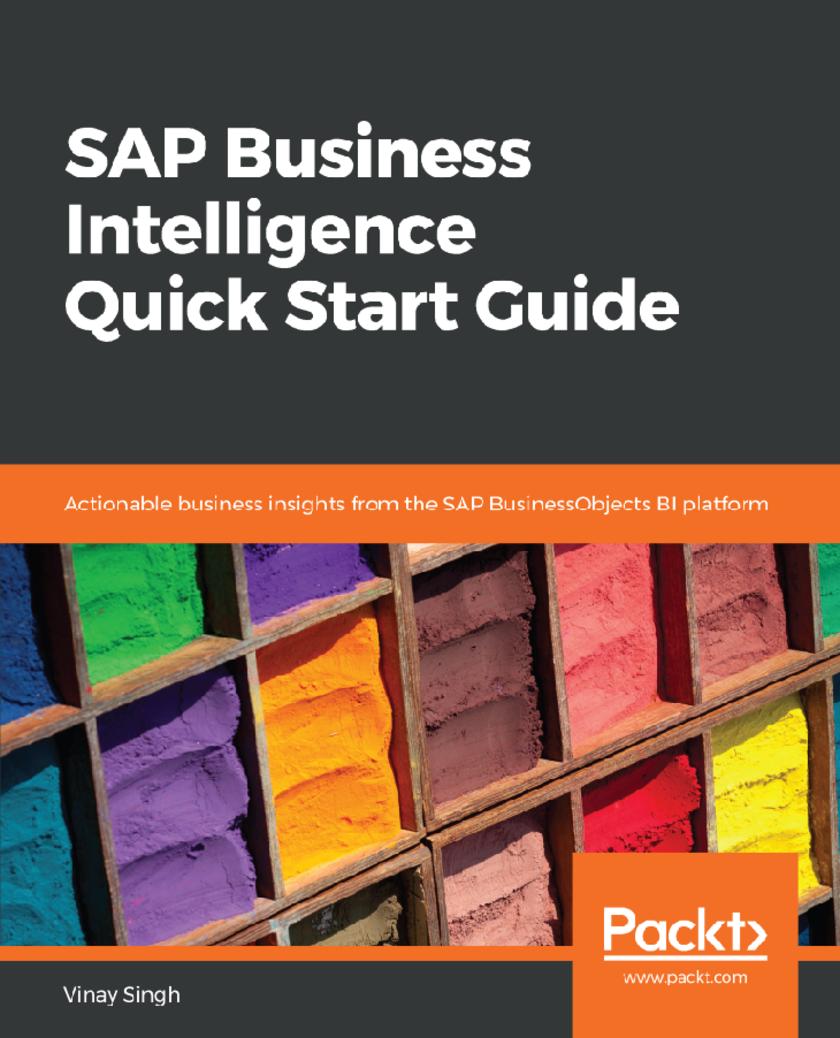
SAP Business Intelligence Quick Start Guide
¥63.21
Designing and deploying solutions using the SAP BusinessObjects Business Intelligence platform 4.2. Key Features * Get up and running with the SAP BusinessObjects Business Intelligence platform * Perform effective data analysis and visualization for actionable insights * Enhance your BI strategy by creating different types of reports and dashboards using SAP BusinessObjects Book Description The SAP BusinessObjects Business Intelligence platform is a powerful reporting and analysis tool. This book is the ideal introduction to the SAP BusinessObjects Business Intelligence platform, introducing you to its data visualization, visual analytics, reporting, and dashboarding capabilities. The book starts with an overview of the BI platform and various data sources for reporting. Then, we move on to looking at data visualization, analysis, reporting, and analytics using BusinessObjects Business Intelligence tools. You will learn about the features associated with reporting, scheduling, and distribution and learn how to deploy the platform. Toward the end, you will learn about the strategies and factors that should be considered during deployment. By the end, you will be confident working with the SAP BusinessObjects Business Intelligence platform to deliver better insights for more effective decision making. What you will learn * Work with various tools to create interactive data visualization and analysis * Query, report, and analyze with SAP Business Objects Web Intelligence * Create a report in SAP Crystal Reports for Enterprise * Visualize and manipulate data using an SAP Lumira Storyboard * Deep dive into the workings of the SAP predictive analytics tool * Deploy and configure SAP BO Intelligence platform 4.2 Who this book is for This book is for Business Intelligence professionals and existing SAP ecosystem users who want to perform effective Business Intelligence using SAP BusinessObjects.
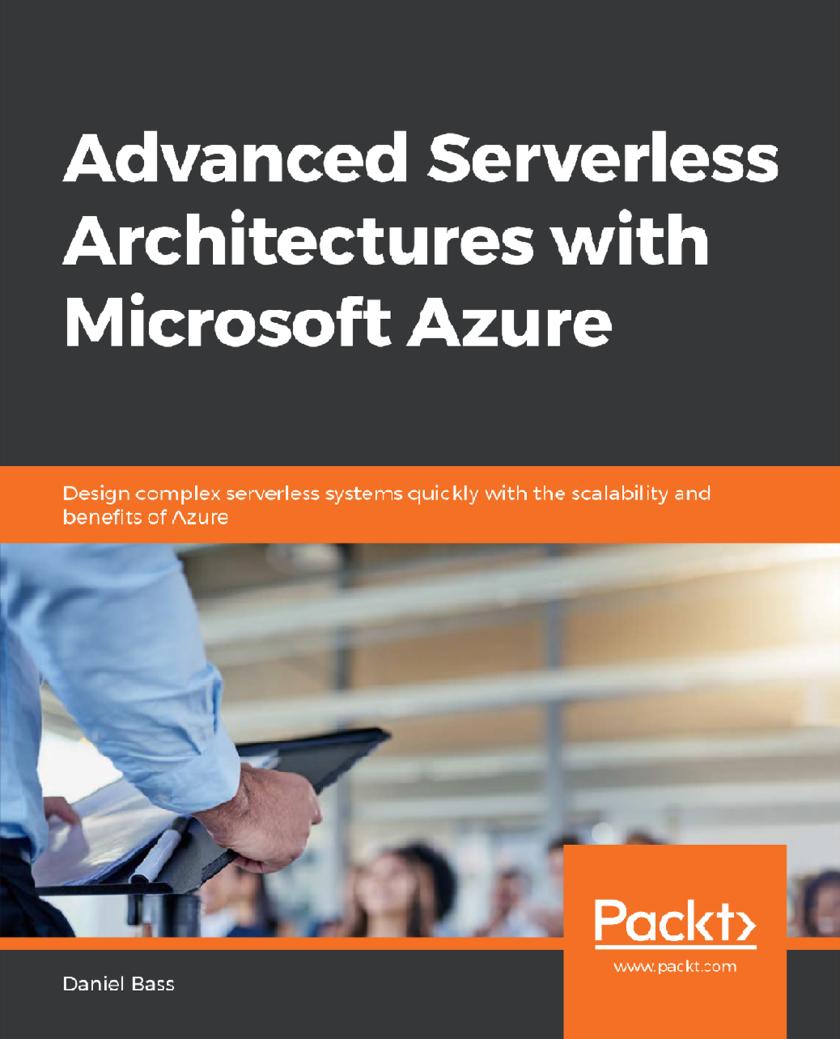
Advanced Serverless Architectures with Microsoft Azure
¥63.21
Build complex, observable, and fault-tolerant serverless systems easily on Microsoft Azure. Key Features * Use serverless systems to help you fulfill complex requirements * Develop your knowledge of Azure Microsoft Serverless * Understand concepts with a hands-on approach and helpful examples Book Description Advanced Serverless Architectures with Microsoft Azure redefines your experience of designing serverless systems. It shows you how to tackle challenges of varying levels, not just the straightforward ones. You'll be learning how to deliver features quickly by building systems, which retain the scalability and benefits of serverless. You'll begin your journey by learning how to build a simple, completely serverless application. Then, you'll build a highly scalable solution using a queue, load messages onto the queue, and read them asynchronously. To boost your knowledge further, the book also features durable functions and ways to use them to solve errors in a complex system. You'll then learn about security by building a security solution from serverless components. Next, you’ll gain an understanding of observability and ways to leverage application insights to bring you performance benefits. As you approach the concluding chapters, you’ll explore chaos engineering and the benefits of resilience, by actively switching off a few of the functions within a complex system, submitting a request, and observing the resulting behavior. By the end of this book, you will have developed the skills you need to build and maintain increasingly complex systems that match evolving platform requirements. What you will learn * Understand what true serverless architecture is * Study how to extend and scale architectures until they become ‘complex' * Implement durable functions in your design * Improve the observability of your serverless architecture * Implement security solutions using serverless services * Learn how to ‘practise' chaos engineering in production Who this book is for Advanced Serverless Architectures with Microsoft Azure is is ideal if you want to build serverless systems with fewer outages and high performance using Azure. Familiarity with the C# syntax and Azure Functions and ARM templates will help you to benefit more from this book. Prior knowledge of basic front-end development, HTML JS, and CSS is beneficial but not essential. Some DevOps knowledge is also beneficial but not essential.




 购物车
购物车 个人中心
个人中心



